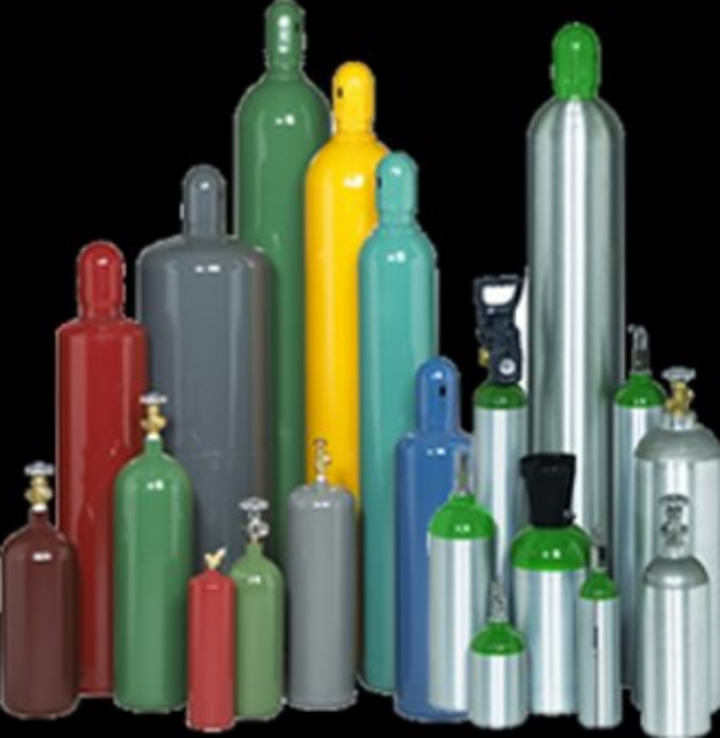Overview
Valve cap is not in place when the cylinder is out of service.

- Note: Some cylinders do not have caps
Cylinders not in use must be capped if the cylinder is threaded for a cap. However, some cylinders are not threaded for caps. The accompanying image which shows both. Previous slides showed cylinders with permanently attached valve protectors (i.e. the freon and propane cylinders). All cylinders, even those capped, must be restrained. For those cylinders that can not be capped, the restraint is all that is required. Cite this if you find a cylinder threaded for a cap that does not have a cap in place.
Note that a regulator on a cylinder does not necessarily mean it is in use. Do not cite it if the cylinder is at its point of use but not actively being used. An example of this is nitrogen gas used to put nitrogen blankets over products in bottles prior to storage or cylinders that are in place to provide nitrogen to experiments run at various times.
There may be sometimes when the cylinder could sit for hours, overnight, or even days with nothing more than a hose connected to the regulator. Again, these cylinders are at their point of use and should not be cited. However, if the cylinder is someplace other than its point of use (i.e., in a common area for cylinders), then it should be cited.